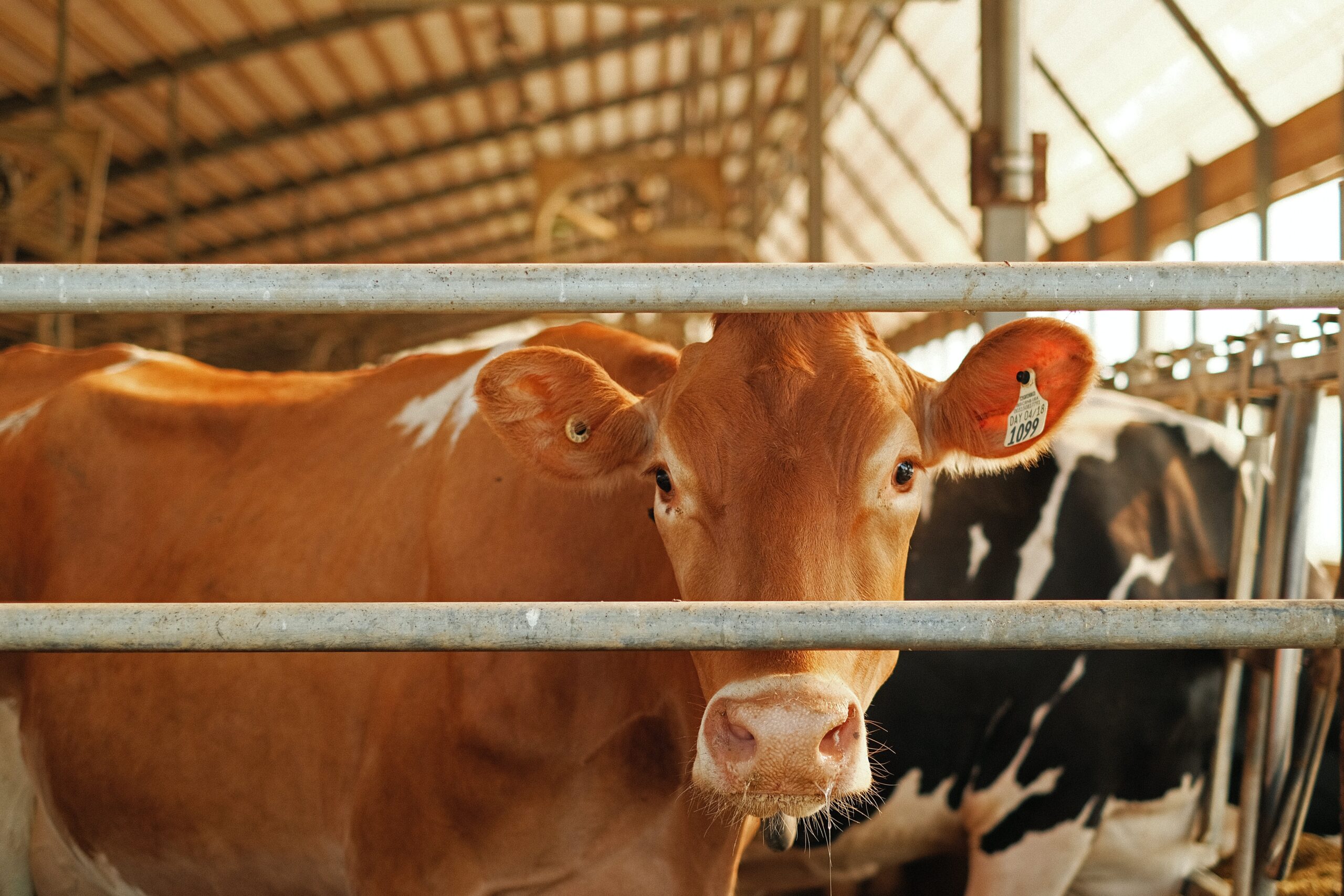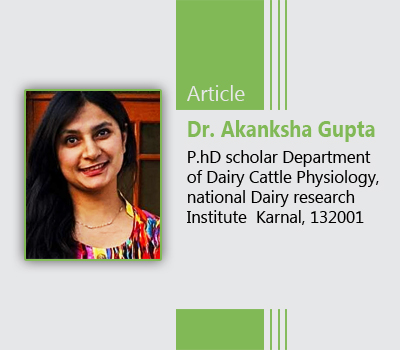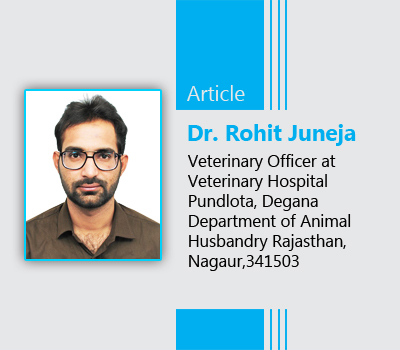
Abstract
In India, subclinical mastitis is found more prevalent (varying from 10-50% in cows and 5-20% in buffaloes) than clinical mastitis (1-10%). Bovine mastitis is one of the most important bacterial diseases of dairy cattle throughout the world. Mastitis is responsible for great economic losses to the dairy farmers and to the milk processing industry resulting from reduced milk production, alterations in the composition of milk, rise milk discard, increased replacement costs, extra labor, treatment costs, and veterinary services. The economic losses due to mastitis have been estimated to be Rs 7165.51 crores per year in India (Bansal and Gupta et al. 2009). Inflammation of the mammary gland is usually a consequence of adhesion, invasion, and colonization of the mammary gland by one or more mastitis pathogens such as Staphylococcus aureus, Streptococcus uberis, and Escherichia coli.
Introduction
Clinical mastitis remains the most economically important disease in milking animals. It causes significant economic losses through decreased milk production and has become an economic burden for dairy farmers. Clinical mastitis is an inflammatory response to infections causing visible abnormal milk (e.g. Color, milk clots). As the extent of infection increases, changes in the udder (swelling, heat, pain, redness) may also be apparent. Clinical cases that include only local signs are referred to as mild or moderate. If the inflammatory response includes systemic involvement (fever, anorexia, shock), the case is termed as severe. If the onset is very rapid, as often occurs with severe clinical cases, it is termed acute or severe mastitis.
Etiology
Various microorganisms have been identified from bovine mastitis. The most common bovine mastitis pathogens are classified as contagious and environmental mastitis pathogens (Bradley et al).
- Environmental mastitis pathogens
- Streptococcus uberis mastitis
Streptococcus uberis is one of the environmental mastitis pathogens that accounts for a significant proportion of subclinical and clinical mastitis in lactating and non-lactating cows and heifers (Smith et al.)
- Coagulase-negative Staphylococcus species (CNS)
More recently, coagulase-negative Staphylococcus species (CNS) such as S. chromogenes, S. simulans, S. xylosus, S. haemolyticus, S. hyicus, and S. epidermidis are increasingly isolated from bovine milk with S. chromogenes being the most increasingly diagnosed species as a cause of subclinical mastitis (Vliegher et al).
Coliform mastitis
Coliform bacteria such as Escherichia, Klebsiella, and Enterobacter are a common cause of mastitis in dairy cows. The most common species, isolated in more than 80% of cases of coliform mastitis, is Escherichia coli.
- Contagious mastitis pathogens primarily exist in the infected mammary glands or on the cow’s teat skin and transmit from infected to non-infected mammary glands during milking by milker’s hand or milking machine liners. Mycoplasma spp. may spread from cow to cow through aerosol transmission and invade the udder subsequent to bacteremia. The most frequent contagious mastitis pathogens are coagulase-positive Staphylococcus aureus, Streptococcus agalactiae, Mycoplasma Bovis, and Corynebacterium bovis (Bobbo et al.)
Sign and symptoms
- Gross abnormalities in milk (discoloration, clots, flakes, pus)
- Physical abnormalities of udder: acute – diffuse swelling, warmth, pain, gangrene in severe cases; chronic – local fibrosis and atrophy.
- Systemic response: may be normal or mild, moderate, acute, or per-acute with varying degrees of anorexia, toxemia, dehydration, fever, tachycardia, ruminal stasis, recumbency, and death.
- Detection at the herd level: Bulk tank milk somatic cell count (SCC). Culture of bulk tank milk
- Detection at the individual cow level: abnormal-looking milk, culture of composite or quarter milk samples
- Indirect tests include SCC of composite or quarter milk samples, California Mastitis Test (CMT) of quarter milk samples, inline milk conductivity tests of quarter milk samples
- Use of selective media to differentiate Gram-positive and Gram-negative pathogens in cases of clinical mastitis

Control and management of clinical mastitis
Five-point plan was introduced by National Institute for Research in Dairying (NIRD) since 1960s is effective in controlling contagious mastitis pathogens.
These five points are:
- Identify and treat clinical cases
- Post milking teat disinfection
- Dry cow treatment (DCT)
- Cull chronic cases
- Routine maintenance of milking machine.
Unfortunately, the five-point plan is not very effective against environmental pathogens and hence, is coupled with other appropriate strategies to control mastitis infections.
Antimicrobial therapy
The main strategy to treat mastitis is by the use of antibiotics, such as penicillin, ampicillin, tetracycline, gentamycin, etc., which can be given by intra-mammary infusion, intramuscular or intravenous injections. The DCT is one of the best choices to control and inhibit the progression of mastitis.
Non-steroid anti-inflammatory drugs
Acute and per-acute mastitis cases also require supportive therapy (fluid and electrolytes) and non-steroidal anti-inflammatory agents (NSAIDs).
Dry cow therapy
Dry cow therapy is the use of intra-mammary antimicrobial therapy immediately after the last milking of lactation and is an important component of an effective mastitis control program. Intra-mammary infusion of long-acting antimicrobial agents at drying off provides the best treatment for subclinical mastitis due to contagious pathogens, decreases the number of existing infections, and prevents new infections during the early weeks of the dry period. Dry cow therapy should be routinely administered and remains one of the cornerstones of an effective mastitis control program.
Blanket dry cow therapy: It is the treatment of all four quarters at drying off
Selective dry cow therapy: It is based on the treatment of only those quarters that are infected.
Vaccination
Vaccinating cows can be deemed as a preventive mastitis treatment in herds. Most vaccines are designed to target Staph. aureus, Strep. agalactiae, and E. coli. Vaccines targeting Staph. aureus and Strep. agalactiae are made up of either the whole organism (inactivated, high encapsulated, or unencapsulated cells and attenuated vaccines) or subunits (toxins, bacterial surface extract, and crude extract of polysaccharides); while for E. coli, the mutant core antigen J5 was used widely. However, vaccines are yet to provide reliable protection.
Conclusion
Prevention is more important than treatments for Effective control of mastitis in dairy animals. Vaccination against mastitis-causing microbes is one of the most important prevention methods. Nowadays, antimicrobial therapy is still an established component in mastitis control programs. Antibiotics are often coupled together with other therapies, yet the effectiveness is still not satisfying. Therefore, searching for new therapeutic alternatives is necessary. A wide variety of natural products derived from plants, animals, and bacteria were investigated and reported to have the potential in controlling bovine mastitis.

1* Dr. Akanksha Gupta
2*Krishna N. Bansal, 3* Gaurav K. Bansal
2*M.V.Sc. Scholar, Department of Veterinary Gynecology and Obstetrics, Rajasthan University of Veterinary and Animal Sciences, Bikaner, Rajasthan, 334001.
3*Teaching associate, Department of Animal Genetics and Breeding, College of Veterinary and Animal Sciences, Udaipur, 313601

4* Dr. Rohit Juneja
Veterinary officer at Veterinary Hospital pundlota, Degana Department of Animal Husbandry Rajasthan, Nagaur, 341503

















